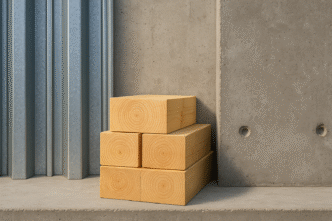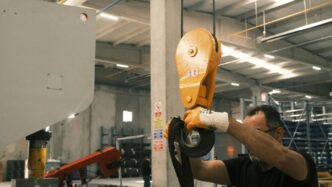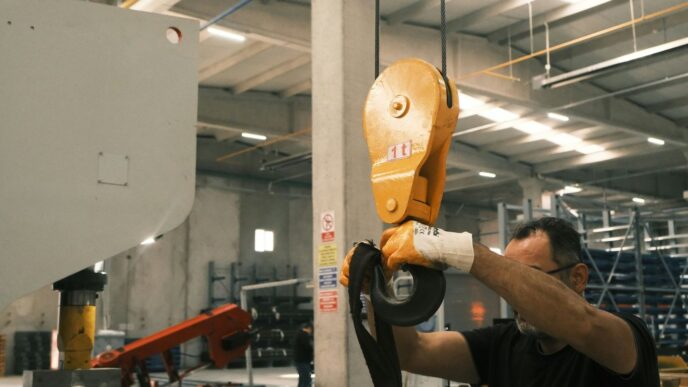When it comes to designing modern buildings, architects and engineers face a critical decision early in the process: what structural material is best suited for the project? Steel, wood, and concrete are the three primary options, each with its own strengths, weaknesses, and situational advantages. While tradition and availability have long influenced material choice, today’s demands around speed, sustainability, safety, and performance are shifting the conversation.
This article breaks down the pros and cons of steel, wood, and concrete from a structural standpoint — comparing everything from load-bearing capacity to cost-efficiency — and helping decision-makers align material choice with their project’s priorities.
Strength-to-Weight Ratio and Load Capacity
One of the first factors considered in structural material selection is load-bearing capacity relative to weight. In this arena, steel outperforms both wood and concrete. Its high strength-to-weight ratio allows for longer spans with less material, enabling more open interiors and fewer support columns — a clear advantage for commercial buildings, warehouses, and public structures.
Steel decking, in particular, enhances this performance by efficiently distributing weight and reinforcing the overall structural system. Concrete, while strong in compression, is heavy and requires reinforcement to handle tensile loads. Wood is lighter but lacks the consistency and load-carrying ability of steel, especially across large spans. For high-rise buildings and industrial settings where performance and safety are paramount, steel decking and framing offer unmatched structural efficiency.
Speed of Construction
Construction speed is another key consideration, especially on tight project timelines. Steel decking and framing systems are pre-fabricated, meaning they can be delivered to the site and assembled quickly with minimal curing or drying time. This reduces labor hours and jobsite congestion, accelerating project schedules.
Concrete construction requires more steps: formwork, mixing, pouring, and curing — all of which take time. Adverse weather can delay concrete curing, causing scheduling headaches. Wood framing can be quicker than concrete in small-scale residential projects, but it doesn’t scale well for larger or more complex structures.
For projects with strict deadlines or phased construction, steel decking’s rapid installation is a decisive advantage.
Durability and Maintenance
Steel is highly durable, especially when treated with corrosion-resistant coatings. It doesn’t warp, rot, or invite pests, and it holds up well in a wide range of climates. With proper maintenance, steel decking systems can last well over 50 years with minimal degradation.
Concrete also offers excellent durability, especially when properly reinforced and maintained. However, it can be prone to cracking, especially if subjected to freeze-thaw cycles or substandard mixing. Repairs can be costly and disruptive.
Wood is the most vulnerable material in this category. It is susceptible to moisture, fire, pests, and decay. While pressure-treated and engineered wood products offer improved resilience, they still lag behind steel and concrete in terms of long-term performance.
Fire Resistance and Building Codes
Fire safety is a top priority in all building types, especially high-occupancy or multi-story structures. In this regard, steel and concrete are the preferred materials. Both are non-combustible and meet stringent fire-resistance ratings. Steel decking, when used in UL-rated assemblies, can help buildings meet or exceed required fire codes and enhance safety in mission-critical environments.
Wood, however, is combustible — even if treated with fire-retardant chemicals. This limits its use in certain occupancies and height classes. As building codes evolve to prioritize fire resilience, the use of wood in structural applications is becoming more restricted.
Sustainability and Environmental Impact
Each material carries a different environmental footprint. Wood is often considered the most sustainable in terms of renewability. When sourced from responsibly managed forests, wood is a carbon-sequestering material with low embodied energy.
However, that sustainability advantage hinges on forestry practices and the product’s end-of-life plan. Steel, though more energy-intensive to produce, is highly recyclable — in fact, most steel decking contains a significant percentage of recycled content. Additionally, steel is fully recyclable at the end of its lifecycle, aligning with circular economy principles.
Concrete has the highest environmental impact of the three, largely due to the carbon emissions associated with cement production. However, advances in carbon-reducing admixtures and green cement technologies are beginning to mitigate this issue.
Design Flexibility and Aesthetic Possibilities
Steel offers exceptional design versatility, especially in large, open-concept structures. Its strength allows for longer spans and cantilevers, supporting innovative architectural forms that would be difficult — or impossible — with wood or concrete alone.
Steel decking profiles allow architects to fine-tune performance and accommodate a range of ceiling heights, rooftop loads, and fire-rated assemblies. Concrete excels at creating sculptural forms and can aid in passive energy strategies, though it’s less flexible in terms of span and speed. Wood, especially engineered varieties like CLT, lends warmth and is ideal for smaller-scale or biophilic projects.
Cost and Long-Term Value
Initial material cost is always a consideration, but smart decision-makers also weigh long-term value. Wood is generally the cheapest upfront, especially for residential and small-scale buildings. Concrete follows, with pricing influenced by local material availability and labor.
Steel decking may involve higher upfront material costs, but it often delivers superior long-term ROI. Its longevity, minimal maintenance, and reduced construction time can offset initial investment. For high-traffic, mission-critical, or large-scale buildings, steel’s reliability often justifies the investment.
Final Verdict: There’s No One-Size-Fits-All
So, which material wins the structural showdown? The answer depends on the project.
- Choose steel decking for speed, strength, safety, and scalability in commercial and industrial builds.
- Choose concrete for mass, thermal inertia, and sculptural form where acoustic or thermal performance matters.
- Choose wood for its warmth, sustainability appeal, and cost-effectiveness in smaller-scale or low-rise structures.
Ultimately, the smartest path forward may lie in hybrid systems that blend the best of each material. But in the realm of large-scale, fast-paced, and performance-driven construction, steel decking is increasingly proving to be the architect’s ace in the deck.














